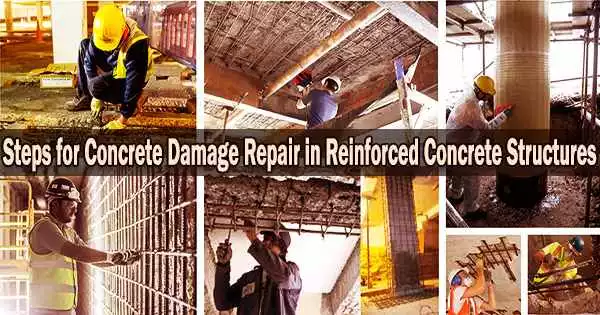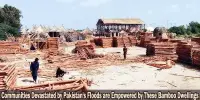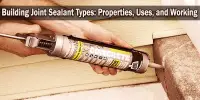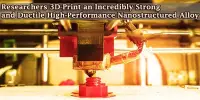In order to determine whether or not defective concrete has to be repaired, there are a few procedures that must be taken, and if it does, the correct repair method and material must be specified.
These repair procedures would guarantee that the process of fixing things was carried out successfully, effectively, and without wasting time or money. Concrete needs to be repaired from time to time as the structure ages for a variety of reasons.
The steps of concrete repair include investigating the cause behind the defect in concrete, assessing the extent and severity of the damage, evaluating the need for repair work, selecting suitable repair technique and materials, reparation process preparation, application of the repair technique, and, finally, curing the repaired area.
Steps for Concrete Damage Repair in Reinforced Concrete Structures
Determine Causes of Concrete Defects: In order to solve the issue, it is important to correctly identify the reasons of the error. The repaired structural member would be more durable and have a longer service life without the need for maintenance if the damage’s primary cause was completely removed or significantly reduced.
However, if the contributing factor for the concrete damage is not addressed, the same concrete defect may recur in the future, wasting time and resources.
It should be understood that the concrete fault under evaluation may be caused by more than one or a few different reasons. All the considerations in this situation must be taken into consideration or the repair work won’t be successful.
Weather, cavitation, abrasion, reinforcing corrosion, chemical attacks, carbonation, cracks, design and construction flaws, and age of the structure are some factors that may negatively affect the strength and integrity of concrete structures.
If the damage’s root cause is recurring, the structural repair must take this into account; however, if the damage’s root cause is a singular occurrence, this can be disregarded.
Assess the Extent of Concrete Damage: Understanding the severity of the damage and how it affects the structure’s lifespan and usability depends on how much concrete has been damaged. An appropriate choice regarding whether to replace or repair the structural part can be made if the extent of concrete damage is determined. Taking preventative efforts to halt potential damage for the known cause of the problem also helps.
Assessing the extent of concrete damage entails figuring out how much of the concrete has deteriorated and how this degradation impacts the structure’s service life, or how much of the concrete has lost its strength or load-bearing capacity.
Concrete soundness test
It is a usual method used to determine the extent of damage in concrete. This procedure, when used in conjunction with a visual inspection and carried out by a skilled engineer, would frequently result in an accurate estimate of the damage.
In this test, the surface of concrete is struck with a hammer; a definite ringing sound indicates that the concrete is sound, but a drummy, hollow, or dull sound indicates that the concrete has delaminated or become disbonded.
It should be kept in mind that delaminations with little amounts of separation or those that are deep may not always sound hollow or drummy. By placing a hand close to the area of the hammer blows or by carefully analyzing the sand particles on the surface near the hammer blows, one can determine whether such delaminations are present.
The concrete is delaminated if the hand feels a vibration in the concrete or if the sand particles are seen to bounce, even slightly, from hammer strokes.
In addition to evaluating the degree of damage caused by hammer strikes, concrete strength can also be ascertained. When a hammer is struck, concrete’s high strength produces a distinct sound, and the hammer intelligently rebounds. Low strength concrete bounces back with a soft thump and little hammer rebound.
Assessment of the extent of damage of concrete may also be done with other Non-Destructive Testing of concrete.
Evaluate the Need for Concrete Repair: In order to decide whether the structure has to be repaired or not, the cost and time required for the repair of concrete structural parts must be assessed.
If the structure’s safety or usability is affected by the damaged concrete, or if the damage is escalating quickly, immediate repair work should be undertaken.
However, if concrete damage progresses at a slow rate and not severe (detected at early stages), then many alternatives can be used to slow damage progression.
Even if repairs are necessary, early damage detection would enable organized budgeting of cash to cover repair costs.
Select Concrete Repair Method: After adequate information about the damaged area; size; and its severity, and repair construction time period is achieved, then proper economical and successful selections regarding repair materials and method of repairing can be selected.
This information would also help to evaluate when it is inappropriate to use regular repair materials and when alternative materials should be examined.
It is best to choose repair materials and a procedure that won’t hasten the deterioration of reinforcement steel or concrete that is already there.
Prepare Damaged Concrete for Repair: The key to completing long-lasting repairs is properly preparing the old concrete for the application of the repair material. Even the best restoration materials wouldn’t operate satisfactorily if they were used on old, weakening concrete.
The repair material must be able to bond with sound concrete. Before fresh repair materials are used, all of the damaged or deteriorating concrete must be removed.
Before applying concrete repair, the concrete perimeter should be saw-cut into an appropriate shape, loose concrete removed, steel cleaned, the reinforcement steel coated with a bonding agent, the repair area cleaned, and the bonding agent applied to the concrete surface (to create a strong bond between the old and new concrete).
Apply Suitable Repair Method: Depending on the kind of damage, a wide range of typical concrete repair techniques and materials are available. Depending on the type of concrete damage, appropriate techniques and materials should be applied.
Cure Repaired Concrete: If concrete damage has to be repaired, a suitable curing regimen should be taken into account in order to give the region the necessary strength and durability. If concrete is not sufficiently cured, the labor, money, and resources used to fix the defective area are wasted.
Varied repair materials require different curing conditions. For instance, some materials may need a lot of water curing, while others may need less. Some materials also require enough protection without being exposed to water until they reach the desired strength.
















